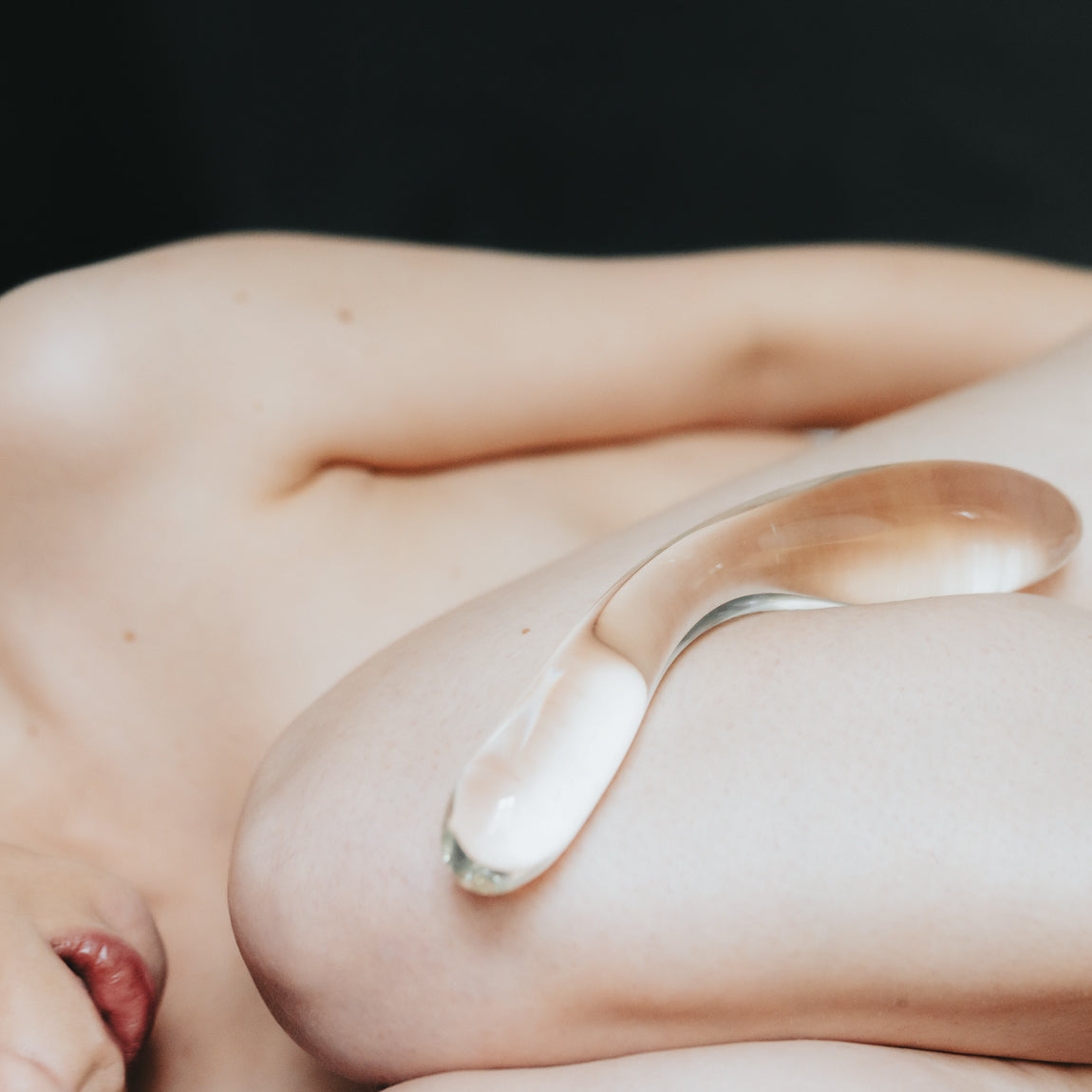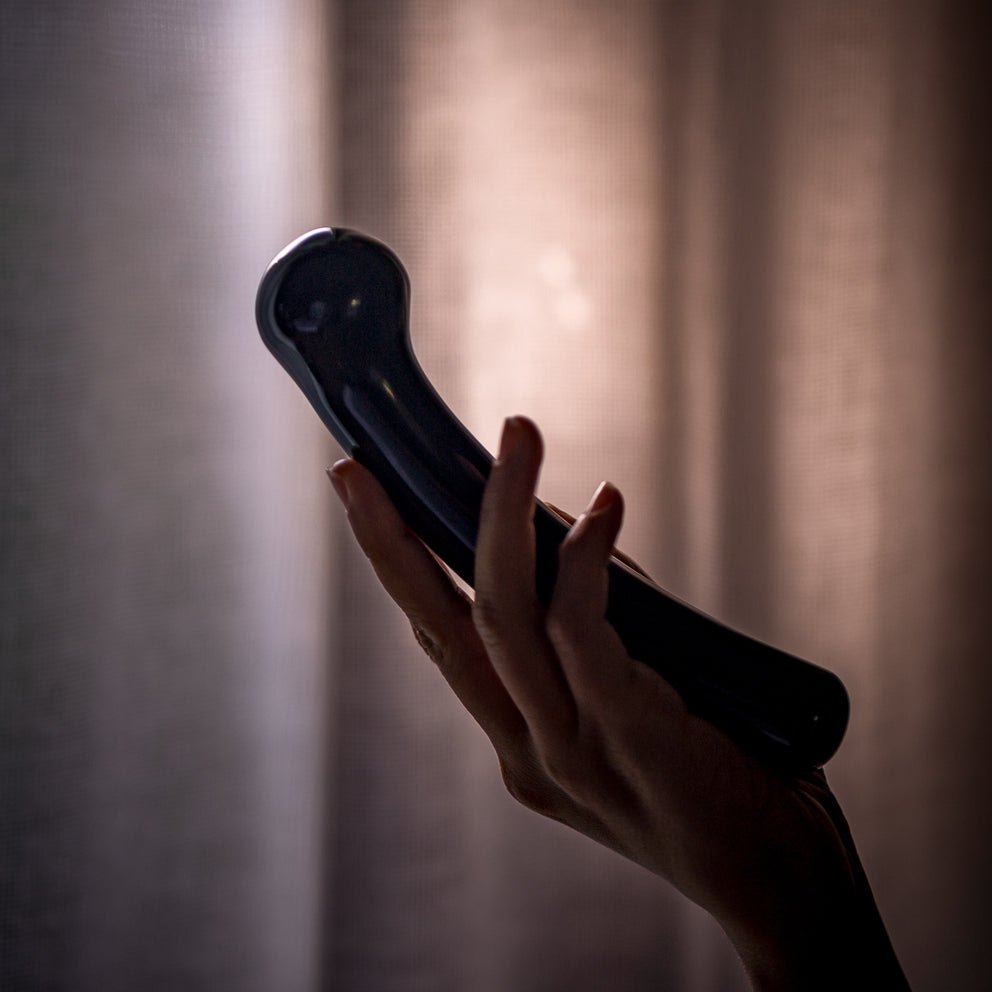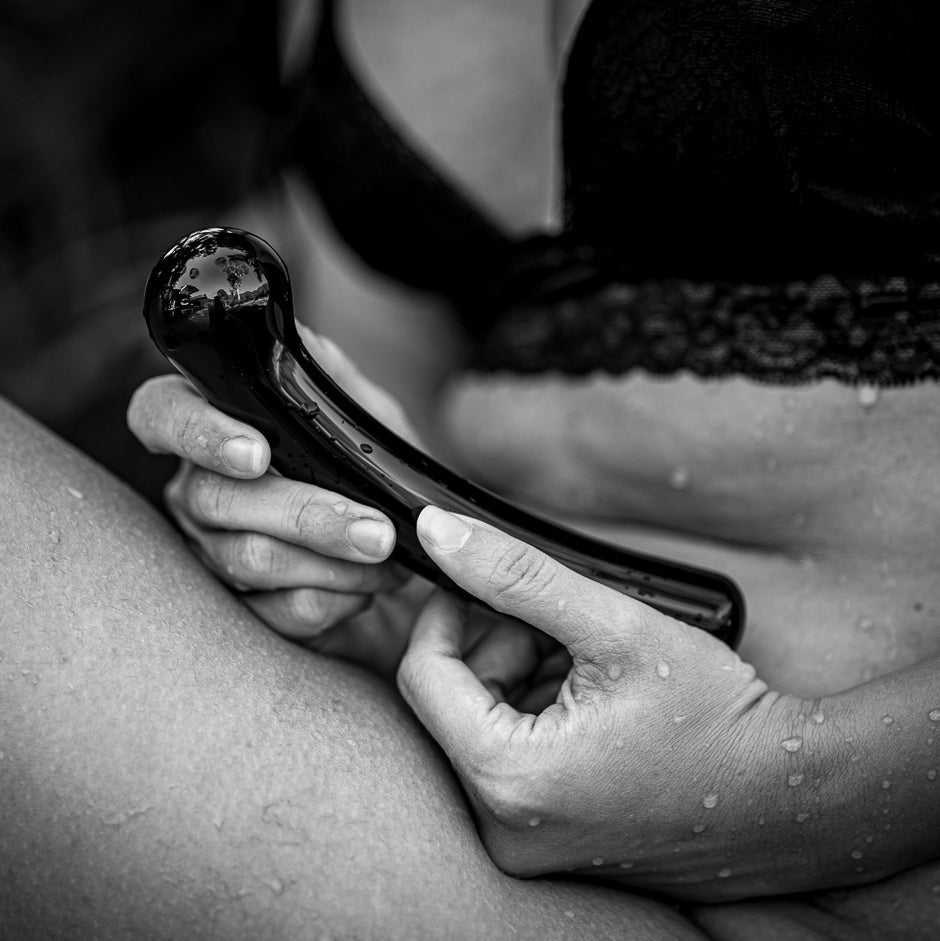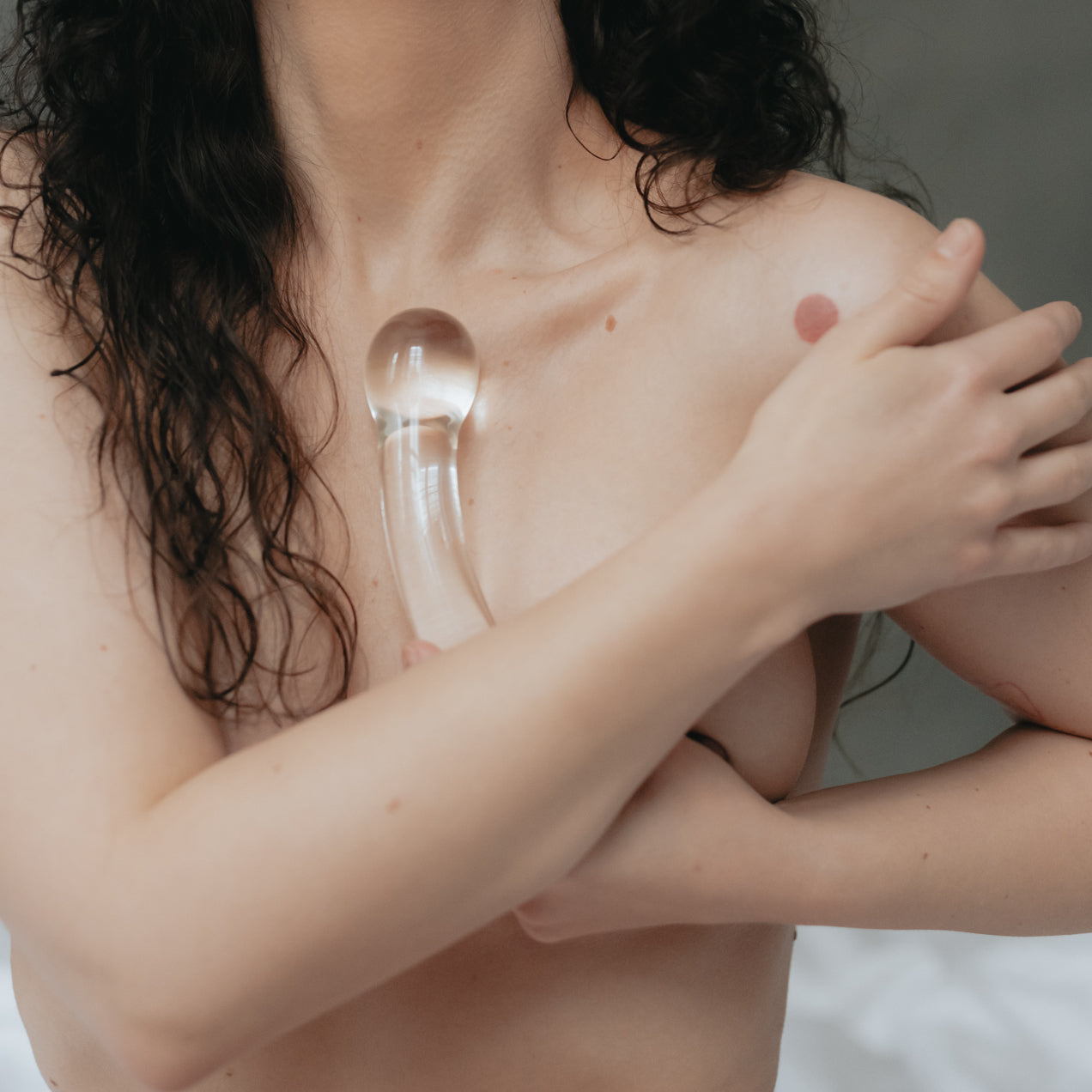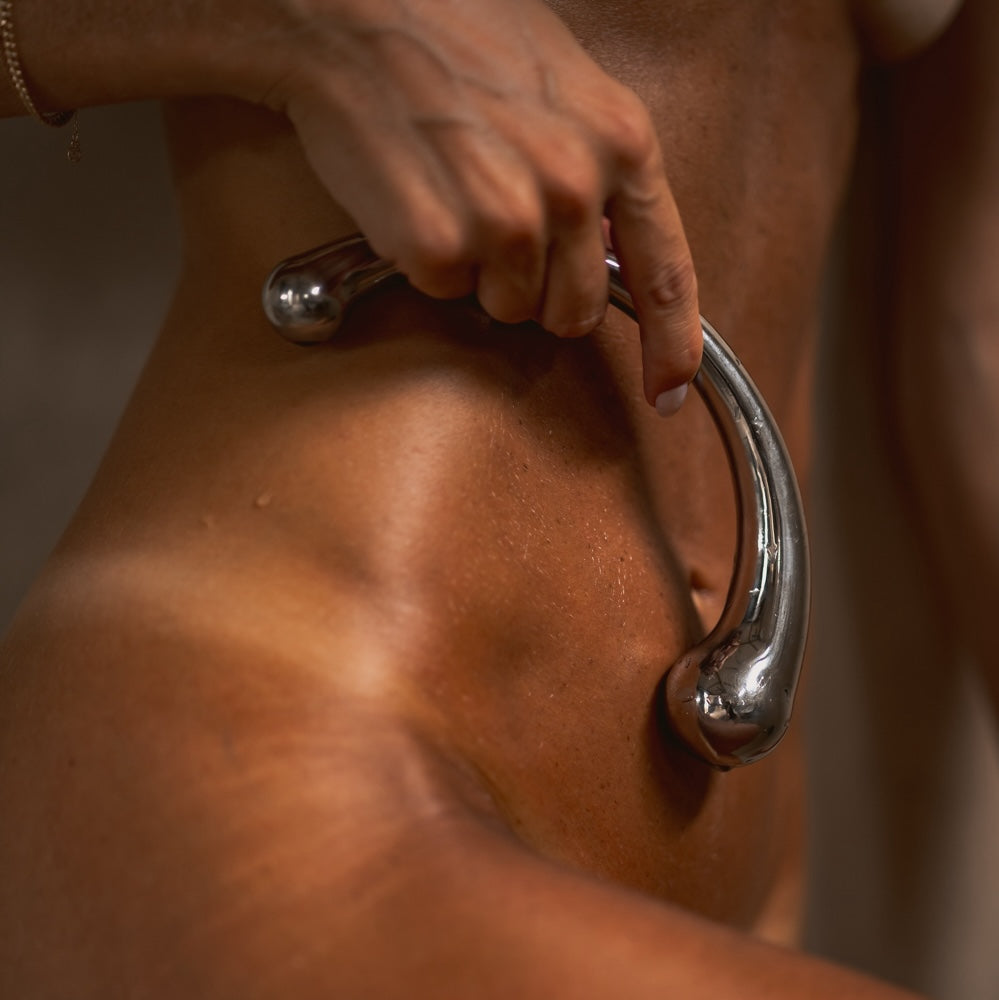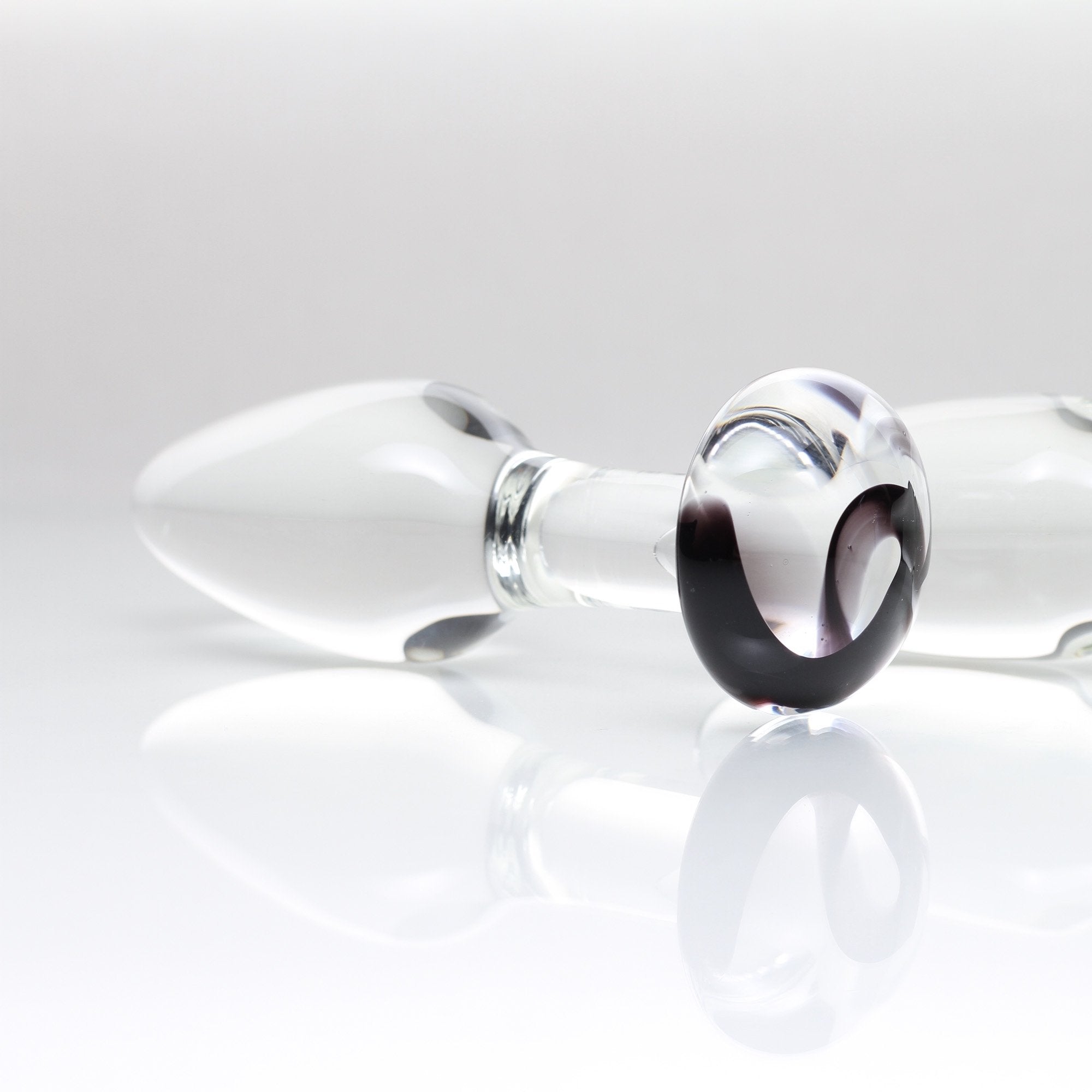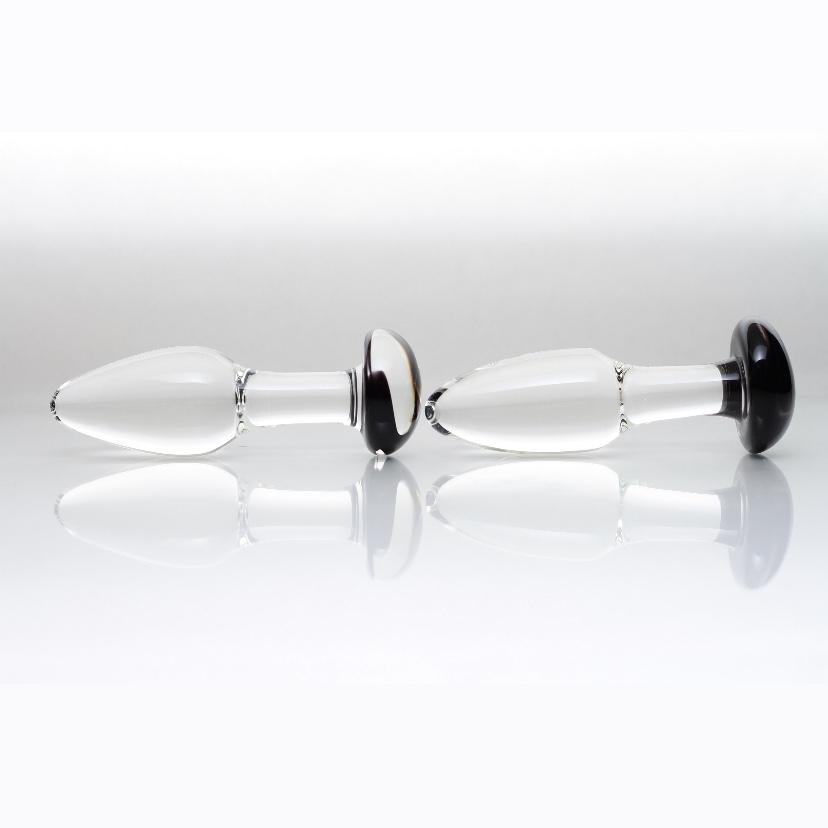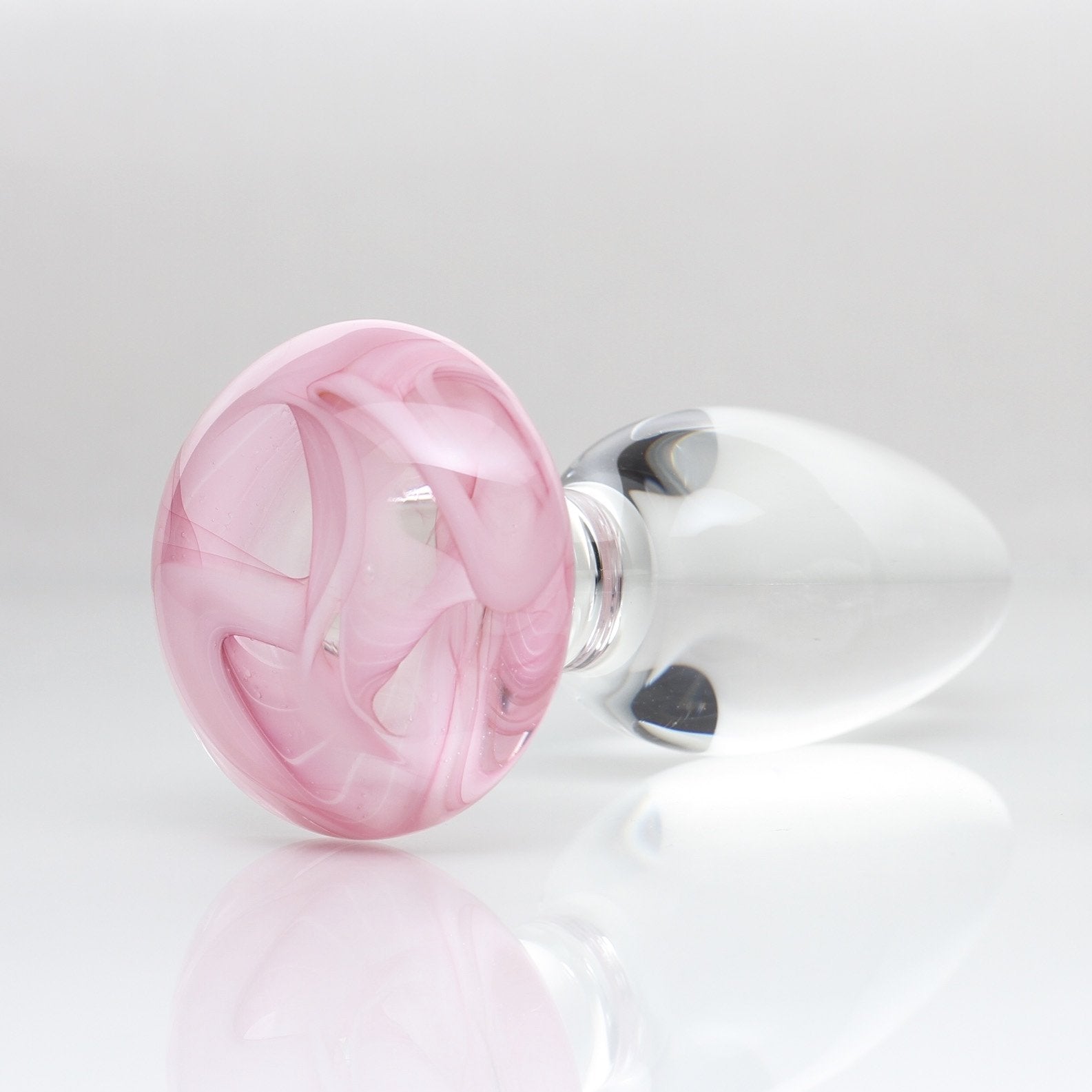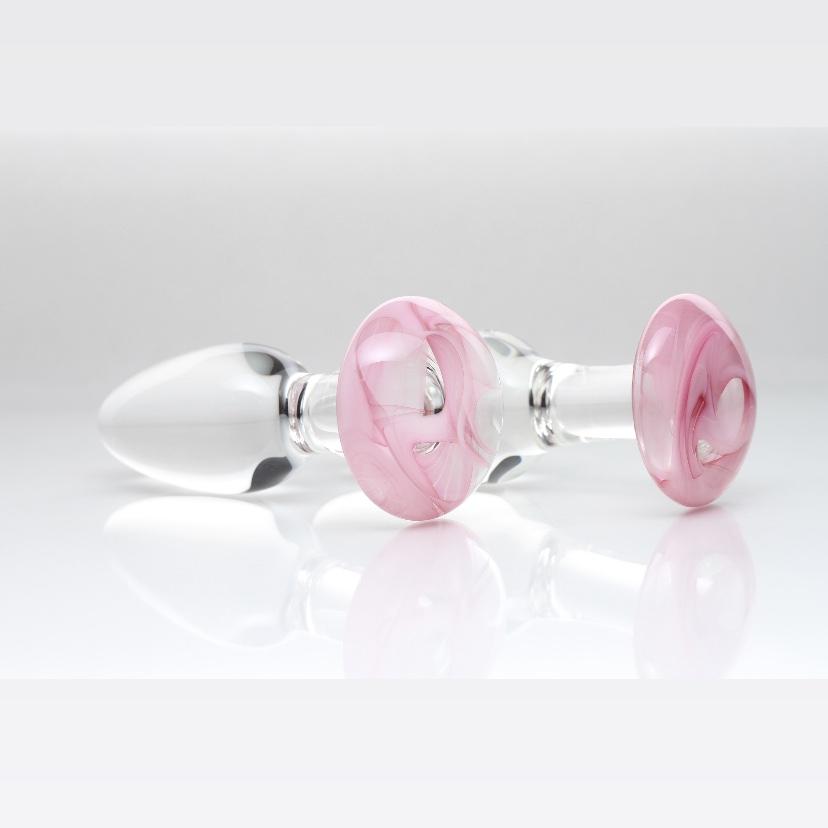
Yoni Massage 101
Yoni massage is a deeply intimate practice involving internal vaginal and pelvic massage, designed to release tension and awaken the body's natural sensitivity. Rather than focusing solely on orgasm, it is approached as a form of therapeutic self-care. This practice can enhance circulation, ease muscular tension, and support women in cultivating a positive, empowered connection with their bodies and sexuality.
Physiological Benefits: Better Circulation and Muscle Health
By gently stretching and kneading the internal pelvic muscles, yoni massage improves blood flow and “cellular flow” to the entire pelvic basin. Tight pelvic muscles, scar tissue (for example from childbirth), and “muscle knots” in the vagina and vulva can restrict local circulation and irritate nerves. Regular internal massage (even just with a finger) or use of a curved wand helps the pelvic floor muscles lengthen and relax, restoring flexibility and strength. Physical therapists note that releasing this chronic tension can dramatically improve tissue health: relaxed muscles regain range of motion and tone. While engorged, well-oxygenated tissues feel more resilient and responsive.
In practice, many women report that consistent yoni massage “plumps” and thickens vaginal tissues and increases natural lubrication – especially important as estrogen levels decline with age. In other words, waking up this area with regular touch can literally keep the vaginal tissues supple and nurtured with blood, preventing atrophy and dryness.
Reinforcing Pleasure Pathways
The benefits of yoni massage are not just local to the pelvis – they extend to the brain as well. Neuroscience shows that the brain’s pleasure and reward circuits become more efficient with practice. Repeatedly rewarding sexual stimulation induces neuroplastic changes: the neural pathways mediating arousal and orgasm become “routine or automated” through positive reinforcement. In plain terms, each time you experience pleasurable sensations (with adequate relaxation and consent), the brain reinforces those circuits, making it easier to feel pleasure and arousal the next time. Dopamine-rich reward areas like the hypothalamus and nucleus accumbens become more engaged, and pathways linking the spinal nerves of the vagina to higher cortical regions are strengthened. Over time, this “use it and reinforce it” principle means that intentional, mindful sexual self-stimulation (such as with yoni massage) can help solidify a healthy libido and make orgasmic responses more readily accessible.
Because the pelvic nerves (pudendal, pelvic splanchnics, etc.) feed into the brain’s sexual centers, increased vagal and spinal stimulation from massage also improves sensory mapping. Women often discover that what felt like numb or “boring” areas may awaken with regular practice.
In fact, many people report sensations of pulsing warmth or waves of heat during pelvic massage—a sign that blood vessels are dilating and nerve activity is increasing. This interoceptive feedback (feeling the body from the inside) is a key feature of sexual well-being: as the body relaxes, the brain finally “takes note” of gentle touch that might otherwise have been filtered out. Over weeks and months of regular practice, these repeated pleasure experiences tune the brain to respond more sensitively and positively to vaginal stimulation.
Emotional and Somatic Healing
Yoni massage is as much an emotional practice as a physical one. Like other somatic therapies, it acknowledges that the body can hold past stress or trauma – especially in the pelvic area. Somatic-experiencing therapists point out that chronic emotions (anxiety, fear, even shame) can manifest as pelvic floor hyper-tension and pain. By slowly massaging and consciously breathing into the pelvic tissues, many women find that stored emotional tension begins to dissolve. It is not uncommon to experience tears of release or bouts of laughter as tight “knots” unwind; some women even report a gentle full-body “catharsis” reminiscent of orgasmic release, even though the session is not intended to be erotic.
Experts describe this as revealing and releasing unconscious beliefs: for instance, if someone has anxiety around sexuality, the muscles around the vagina may guard tight, dulling pleasure. As internal massage loosens these muscles, it can unlock neural gates and allow suppressed feelings to surface. One sex-education author notes that yoni massage (or “mapping” therapy) aims to “find and release the source of sexual setbacks … hidden in muscle knots and tightness”. Similarly, somatic sex therapists emphasize that the touch-and-talk environment of yoni massage allows emotional trauma held in the pelvis to be processed safely. Women often emerge from sessions with a renewed sense of body ownership and self-esteem – a shifting of pelvic floor health and body image “into a positive one”. In short, the massage teaches the nervous system that the pelvis is a safe, pleasurable space, rewiring fear responses into comfort and openness.
Pleasure Wands and Tools
Specialized wands (often called “pleasure wands” or “pelvic wands”) can greatly aid this practice. Unlike a finger, a good wand is usually made of smooth medical-grade silicone and shaped with a gentle curve and bulbous head. This design allows you to hook or rotate the tip to reach deep muscles (including common trigger points along the vaginal walls and “G-spot” on the front wall) with consistent pressure. Physical therapists endorse these S- or J-shaped wands as effective self-treatment tools. Pelvic wands can reproduce techniques a therapist would do, helping women continue manual therapy at home.
The bulbous end is not just for show: it concentrates force over a small area to stretch tight bands of muscle and fascia. By contrast, a fingertip can slip or flatten and has limited leverage. A wand’s handle and curve let you use your arm’s weight and angles to your advantage, often accessing spots that are hard to feel by hand. Many women combine this approach with gentle tapping, which has been shown to further increase blood flow and pelvic relaxation.
When using a wand for the first time, approach it as you would any new exercise tool: go slowly and gently. Some basic tips:
-
Cleanliness: Always wash the wand with warm water and mild unscented soap before and after use. This protects the delicate mucosa of the vagina.
-
Lubrication: Use a generous amount of water-based lubricant on the wand’s tip and on your vulva. A slick surface helps the wand glide easily and prevents scraping.
-
Positioning: Find a comfortable, relaxed position in bed or on a couch. For many, lying on the back with knees bent and feet together (“butterfly pose”) opens the vaginal entrance. Support your back and head with pillows so you can fully relax your abdomen and pelvic floor.
-
Insertion and technique: Gently insert the wand a little way in, feeling for resistance. Move very slowly – perhaps with long sweeping strokes along the vaginal canal or small circular rubs on spots that feel tight. Avoid sudden or sharp movements. Aim for gentle pressure at any tender “knots” and hold it there a few seconds, then release. You can explore all around (as if following a clock face) and notice how each area responds. If you feel pain, ease off. The goal is not vigorous pounding but soothing, loving touch that the body can integrate. You can follow these step-by-step yoni massage instructions.
-
Breath and awareness: Throughout the massage, breathe deeply into your belly and pelvic floor. Imagining warm breath directed to the area can help it relax. Stay mindful of sensations – even mild tingling or a pulsing warmth is a good sign of increased circulation.
-
Duration and frequency: Start with short sessions (5–10 minutes) focused on relaxation. Over time you may extend to 15–20 minutes. Many practitioners recommend beginning with 2–3 sessions per week if healing a particular issue (like postpartum tension or pain), then moving to maintenance (perhaps 1–2 times a month) once you feel balanced.
Remember, you are in control of the session. Use as much pressure as feels good and never more. If a spot feels sore, you can hold steady on it or release gently – again, soft patience is the name of the game. Avoid any positions that strain your hips or back; pivoting the wand with slow arcs often yields a more pleasant release than brute force. Afterward, wash the wand again and take a moment to check in with your body. Some women find journaling or noting their sensations (emotions, relaxation, any discomfort) to be helpful feedback for next time.
Overall, yoni massage is a science-grounded path to intimacy with your body. It awakens tissues and nerve endings (often enhancing vaginal sensation and lubrication), improves pelvic floor function and comfort, and gently rewires the brain’s reward centers for increased pleasure. The emotional release it can unlock (from simple stress relief to deeper trauma healing) makes it a profound somatic therapy. By combining mindfulness, medical understanding, and a sensual attitude of consent and care, yoni massage transforms a self-care ritual into both an art and a science – one that can enrich sexual well-being and overall health.
RECOMMENDED PRODUCTS FOR YONI MASSAGE









